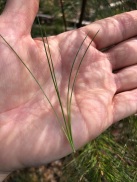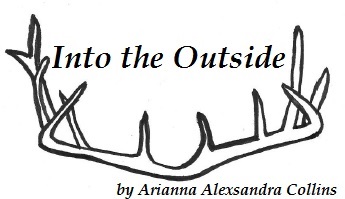White Pine and Eastern Hemlock: Two Year-round Wild Edibles
If you are in the need of citrus and are unable to obtain non-local fruit such as lemons and oranges, consider a different type of grocery store – the woods.
Most conifers, cone bearing trees, are edible; specifically pines, spruce, and fir. The needle-like leaves can be steeped for tea, providing a healthy dose of vitamin C. Simply boil water then pour into a cup with a handful of fresh needles to steep. The needles are antiscorbutic so no need to worry about getting scurvy if oranges were to become unavailable. The cedar family is also rich in vitamin C but you do need to be more cautious about the amount you ingest as cedars also contain thujone, a toxic ketone (type of terpene) that in large doses affects the central nervous system. Taxaceae or yew family is toxic and it is not recommended you ingest.
Getting to know you; getting to know all about you…
Two common, native New England trees to get to know better are the eastern hemlock and the eastern white pine, both in Pinaceae or the pine family.
 Eastern hemlock, Tsuga canadensis, is not to be confused with the herbaceous, similarly named water hemlock (Cicuta maculata) and poison hemlock (Conium maculatum).
Eastern hemlock, Tsuga canadensis, is not to be confused with the herbaceous, similarly named water hemlock (Cicuta maculata) and poison hemlock (Conium maculatum).  This conifer sports dark green flat needles, occurring singly with white stomatal bands on the needles’ underside – think racing stripes. Another important feature is that eastern hemlock has a tiny petiole – like an itty-bitty stem. The poisonous yew (“never eat yew”) (Taxus canadensis), which also has flat needles, does not have a petiole, nor white lines on underside of the needle. Though eastern hemlock is a common tree and can form dominant stands, creating cool sinks, it is being attacked by the invasive wooly adelgid. This critter forms white sticky masses on the underside of the needles and steals the nutrients to the tree. As a youngster, hemlock bark has reddish-gray to reddish-brown irregular scales with an inner layer that is cinnamon-y colored and warty cinnamon-red lenticels. As the tree ages those scales thicken, lengthen, and form ridges.
This conifer sports dark green flat needles, occurring singly with white stomatal bands on the needles’ underside – think racing stripes. Another important feature is that eastern hemlock has a tiny petiole – like an itty-bitty stem. The poisonous yew (“never eat yew”) (Taxus canadensis), which also has flat needles, does not have a petiole, nor white lines on underside of the needle. Though eastern hemlock is a common tree and can form dominant stands, creating cool sinks, it is being attacked by the invasive wooly adelgid. This critter forms white sticky masses on the underside of the needles and steals the nutrients to the tree. As a youngster, hemlock bark has reddish-gray to reddish-brown irregular scales with an inner layer that is cinnamon-y colored and warty cinnamon-red lenticels. As the tree ages those scales thicken, lengthen, and form ridges.
In addition to hemlock needle tea, the inner bark can be boiled to extract its tannins, which have antiseptic and astringent properties. The tannic water can be used internally for colds and coughs or externally as a wash.
 Eastern White Pine, Pinus strobus. Needles are in bundles of 5.
Eastern White Pine, Pinus strobus. Needles are in bundles of 5.  And if you get confused when remembering which pine is which, you can count the needles w h i t e = 5. White pine is a generalist and can thrive in a wide variety of environmental conditions and habitats. While it’s young, the bark is smooth gray to green-gray. As the tree matures the bark cracks to form irregular shaped scales that turn outward along the edges and the color changes to a grayish-red-brown. (I wonder if Crayola has a name for that color.) As it ages the scales develop fine horizonal cracks that are somewhat evenly spaced and the scales form ridges and appear as vertical blocks. An old pine’s bark becomes deeply furrowed.
And if you get confused when remembering which pine is which, you can count the needles w h i t e = 5. White pine is a generalist and can thrive in a wide variety of environmental conditions and habitats. While it’s young, the bark is smooth gray to green-gray. As the tree matures the bark cracks to form irregular shaped scales that turn outward along the edges and the color changes to a grayish-red-brown. (I wonder if Crayola has a name for that color.) As it ages the scales develop fine horizonal cracks that are somewhat evenly spaced and the scales form ridges and appear as vertical blocks. An old pine’s bark becomes deeply furrowed.
In season seeds can be gathered from the cones and eaten. The pollen is also edible and an antioxidant. But ladies, be careful, the pollen (not the needles) is also androgenic, which stimulates male hormones. The needle-like leaves infused for tea act as both expectorant and diaphoretic; so pine treats coughs and makes you sweat. When the tree is wounded it forms a resin to heal its wound. This resin can be applied directly to the skin as an antiseptic. Just be sure to leave some for the tree to heal too and recognize that the resin is quite sticky.
As you are heading out on your foraging expedition for tree-based vitamin C, you may also come across some delicious spring ephemerals: toothwort, ramps, trout lily, marsh marigold, and ostrich fern fiddleheads. For identification and information on these wild edibles you can visit me at hearkentoavalon.com and scroll through articles on my blog. Happy foraging and wild health to all!
 Arianna Alexsandra Collins, naturalist, poet, writer, wild edible enthusiast, and Wiccan High Priestess lives in Ashfield, MA.
Arianna Alexsandra Collins, naturalist, poet, writer, wild edible enthusiast, and Wiccan High Priestess lives in Ashfield, MA.
 Into the Outside is a bi-monthly feature in the Ashfield News. This article appears in the May 2020 edition of The Ashfield News.
Into the Outside is a bi-monthly feature in the Ashfield News. This article appears in the May 2020 edition of The Ashfield News.
Like Hearken to Avalon on Facebook and learn more about the magical world and natural history of plants and the Faie, and human interactions with them.

